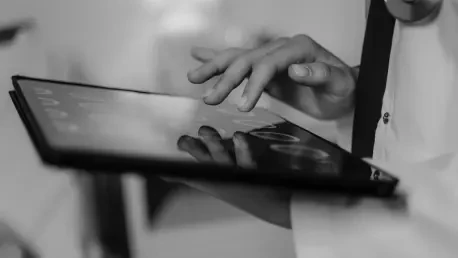The concept of open-source medical devices is steadily gaining traction as a radical catalyst for innovation within the healthcare sector. Rooted in the technological sector, where open-source software has led to rapid advancements, this approach in medical technology promises similar breakthroughs. Spearheaded by efforts like those at USC’s Center for Autonomic Nerve Recording and Stimulation Systems (CARSS), the development of these devices aims to interface with the peripheral nervous system, potentially changing the landscape of patient care. With a focus on collaborative innovation, these initiatives are embracing open-source models, drawing inspiration from the considerable achievements in software development.
The Intersection of Open-Source and MedTech
Bridging Technology and Regulatory Challenges
The intersection of open-source principles with MedTech is a fascinating subject, particularly when examining the inevitable challenges posed by regulatory mandates in the medical device industry. Unlike software, where open-source principles have flourished thanks to the collaborative nature of shared coding, medical devices face high regulatory demands. These regulations are designed to ensure patient safety and efficacy but can be a significant barrier to entry for smaller developers. Medical devices require thorough quality systems, regulatory filings, and manufacturing procedures, complicating efforts to adopt open-source frameworks. Nonetheless, initiatives such as the one led by Ellis Meng at USC are striving to balance collaborative innovation with stringent regulatory adherence. By doing so, they hope to unlock the vast potential of open-source devices in healthcare innovation.
The Momentum of Open-Source Medical Projects
Research conducted by associates such as Alex Baldwin from the USC Viterbi School of Engineering highlights the emerging momentum in open-source medical device projects. This burgeoning ecosystem showcases a growing community engagement and strong documentation practices. Baldwin’s study, published in IEEE Transactions on Biomedical Engineering, underscores that even amidst regulatory constraints, these projects are thriving. The review highlights successful case studies ranging from simple academic prototypes to sophisticated FDA-cleared tools. These cases illustrate how open-source methodologies can significantly contribute to medical innovation. By offering more flexible development pathways, open-source projects enable rapid iteration and adaptation, free from the proprietary restrictions often found in larger corporations.
Overcoming Obstacles in Open-Source MedTech
Navigating Regulatory Hurdles
Despite the significant potential of open-source medical devices, they must navigate complex regulatory hurdles to reach clinical applications. Historically, the lack of access to crucial confidential documentation has been a stumbling block for many independent developers. However, the open-source medical community is increasingly developing solutions to these challenges. A pivotal development in recent years has been the provision of previously unavailable documentation critical for gaining FDA approvals. This transparency offers a developmental blueprint that helps new entrants avoid common pitfalls, potentially accelerating the clinical integration of open-source devices. These measures are instrumental in bridging the gap between innovation and implementation, making open-source medical devices a viable component of modern healthcare.
Real-World Impact of Open-Source Projects
Open-source medical devices have already demonstrated their practical impact in challenging environments. Projects like the Glia Project highlight the tangible benefits of open-source models in real-world settings. By focusing on essential devices such as stethoscopes and tourniquets, this initiative has provided crucial resources in conflict zones like Gaza and Ukraine. The open-source nature of these devices allows local engineers and technicians to quickly produce and modify them, addressing critical shortages and fostering community resilience. Such examples illustrate how open-source medical devices can be lifesaving, promoting innovation where it is needed most. They offer a glimpse into the transformative potential of open-source frameworks in healthcare delivery.
Sustaining and Scaling Open-Source Innovations
Best Practices for Development
As the landscape of open-source medical devices continues to evolve, identifying best practices for long-term sustainability and impact becomes essential. Robust documentation, clear and transparent development processes, and strategic partnerships with clinical users are cornerstones of successful projects. Such elements are crucial not only for sustaining current projects but also for encouraging broader ecosystem development. Researchers at USC’s initiative emphasize the importance of cross-disciplinary connections, which were once fragmented but are now fostering a more cohesive and expanding community. By pooling knowledge and resources, open-source MedTech can achieve breakthroughs that were previously unattainable by isolated efforts.
The Role of Supporting Organizations
Organizations such as the Open-Source Hardware Association (OSHWA) are playing pivotal roles in the scaling of open-source medical devices. By providing infrastructure and support to fledgling developers, OSHWA and similar entities are critical to the integration of open-source models in healthcare. These organizations help codify standards and best practices, fostering an environment where innovation can thrive. Their efforts suggest a wider acceptance of open-source principles within the medical field, an acceptance that may dramatically reshape innovation processes towards more collaborative, transparent, and patient-centered outcomes. As this sector expands, it creates a supportive framework that encourages the next wave of medical device innovation.
Future Considerations and Implications
Toward a Democratized Innovation Landscape
The potential of open-source models to democratize medical device development represents a significant shift in the healthcare industry. By breaking down traditional barriers to entry, these models facilitate inclusive innovation, drawing insights and contributions from a wide range of participants. Open access to critical documentation and methodologies empowers a diverse developer base to tackle complex healthcare challenges in novel ways. This democratization could revolutionize patient care by making medical technology more accessible, affordable, and tailored to specific needs. As the field continues to mature, maintaining a focus on safety and efficacy while leveraging the collaborative power of open-source innovation will be key to reaching its fullest potential.
Harnessing Open-Source Strengths
The idea of open-source medical devices is rapidly emerging as a transformative force in healthcare innovation. Inspired by the success of open-source software in the tech industry, this concept in medical technology holds the promise of similar breakthroughs. Projects like those at USC’s Center for Autonomic Nerve Recording and Stimulation Systems (CARSS) are at the forefront, focusing on creating devices to interact with the peripheral nervous system. This could vastly alter patient care practices. Emphasizing collaborative efforts, these initiatives are adopting open-source methodologies, harnessing the spirit of collective ideas and achievements seen in software development. The open-source model encourages transparency, adaptability, and widespread collaboration, which could lead to accelerated technological advancements, lower costs, and improved patient outcomes. As more stakeholders embrace this approach, the potential for fundamental shifts in how medical devices are developed and utilized becomes increasingly substantial.









